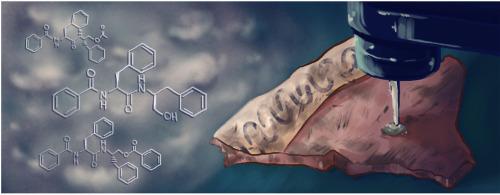Journal of Archaeological Science ( IF 2.6 ) Pub Date : 2021-08-23 , DOI: 10.1016/j.jas.2021.105468 Kristóf B. Cank 1 , Joshua M. Henkin 2, 3 , Anita G. Cook 4 , Nicholas H. Oberlies 1

|
Analyzing ceramics from ancient cultures, many of which are degraded or damaged from hundreds or thousands of years of weathering, present some unique challenges. Mass spectrometry coupled with separation techniques, such as liquid chromatography, provides a means to analyze residues on artifacts. However, most well-known analytical techniques usually cause at least some amount of destruction of the material during the preparation phase, leading to the loss of valuable spatial information and possibly hampering future analyses. In this study of ancient Andean sherds, we present a test case of using a non-destructive LC-MS technique, termed the droplet-liquid microjunction-surface sampling probe (i.e., droplet probe), for studying the chemistry of residues on ceramics. This method combines the benefits of mass spectrometry with the collection of chromatographic data, the combination of which affords a wealth of data. Three naturally occurring plant secondary metabolites, aurantiamide acetate (1), aurantiamide benzoate (2), and aurantiamide (3) were identified on the surface of a vessel and a spoon sherd from the central highlands of Peru. Fragmentation patterns, mass defect filtering and comparison to an in-house standard were used to further confirm the identification of these metabolites. The droplet probe allows for the identification of the chemistry of residues on archeological materials, and in turn, such data allow inferences regarding the potential original or final use of these artifacts.
中文翻译:

液滴探针:对来自帝国中心地带的瓦里陶瓷进行无损残留分析
分析来自古代文化的陶瓷,其中许多已因数百或数千年的风化而退化或损坏,这带来了一些独特的挑战。质谱与分离技术(如液相色谱)相结合,提供了一种分析工件上残留物的方法。然而,大多数众所周知的分析技术通常会在制备阶段至少对材料造成一定程度的破坏,从而导致宝贵的空间信息丢失,并可能妨碍未来的分析。在这项古代安第斯碎片的研究中,我们展示了一个使用无损 LC-MS 技术的测试案例,称为液滴-液体微结-表面采样探针(即,液滴探针),用于研究陶瓷上残留物的化学性质。这种方法结合了质谱的优点和色谱数据的收集,这些结合提供了丰富的数据。三种天然存在的植物次生代谢物,醋酸金黄酰胺(在秘鲁中部高地的一个容器和一个勺子碎片上发现了1 )、橙胺苯甲酸酯 ( 2 ) 和橙黄胺 ( 3 )。碎片模式、质量缺陷过滤和与内部标准的比较被用于进一步确认这些代谢物的鉴定。液滴探针允许鉴定考古材料上残留物的化学性质,反过来,这些数据允许推断这些文物的潜在原始或最终用途。











































 京公网安备 11010802027423号
京公网安备 11010802027423号